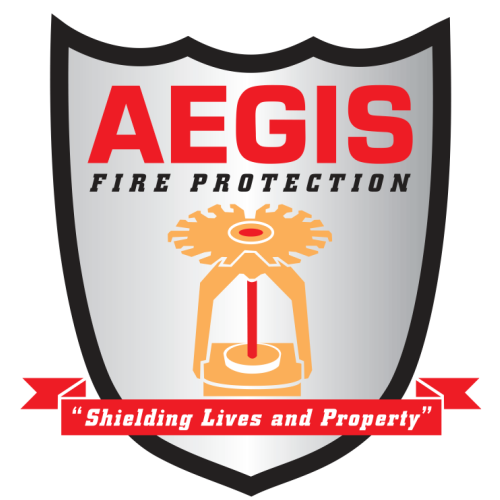A BRIEF INTRODUCTION TO FIRE SPRINKLERS
The modern fire sprinkler system, as we know it today, had its start in 1812. Architect William Congreve installed the first one in the Theatre Royal, Drury Lane in London. It consisted of a series of pierced pipes, which led to a large container of water that was released in the event of a fire. In the 1870's, Philip Pratt invented the first automatic sprinkler system. The automatic fire sprinkler was then improved by Henry Parmalee and later perfected by Frederick Grinnell in the 1890's.
While originally used to protect commercial buildings, fire sprinkler systems are now found in almost every building. They have even started to be installed most recently in residential homes. Today, buildings in the US and Canada are required by local code to have properly working fire sprinkler systems installed in them.
Surprisingly, fire sprinkler systems were not designed to put out fires, but to contain them. When a fire occurs, the heat from the flames increases causing a heat-sensitive glass bulb or metal link in the fire sprinkler head above the fire to break. Once the bulb or link is broken, water then flows from the sprinkler head suppressing the fire until the authorities arrive to extinguish it. In many instances though, the sprinkler system is able to extinguish the fire completely.
Another misconception about fire sprinkler systems is that when a fire happens, all the sprinkler heads are activated throughout the building. While you may have seen this occur in movies, this is not how most fire sprinkler systems operate. In a real fire, the heat from the fire rises, which activates the sprinkler heads above the fire.
In most modern installations, you'll notice that the sprinkler heads use a heat-sensitive glass bulb rather than a metal link. The glass bulbs contain a liquid that has a precise boiling point. The bulb breaks from the liquid inside it boiling and bursting the glass bulb. Since the ambient temperature can vary depending on the space, there are different bulbs with different boiling points. In a standard office building, the temperature has to reach 155 degrees Fahrenheit for the bulb to break and the sprinkler head to activate.
A fire sprinkler system is a pretty simple system that has changed very little from its beginnings over a century ago. Still, some advancements have been made to improve its effectiveness over the years. As stated earlier, modern sprinkler heads use glass bulbs instead of metal or solder links. The bulbs themselves have variances now. For instance, in office buildings and schools, you will typically find quick response sprinkler heads rather than the standard response sprinkler heads.
The newer quick response sprinkler head uses a smaller glass bulb which has a slightly faster response time over the standard response sprinkler. The quick response sprinkler also discharges the water higher up the walls to keep the fire from climbing and to reduce the ceiling temperatures.
Fire pumps are another recent addition over the past half-century, which deliver pressurized water to high rises. Also, the recent integration of sprinkler systems with fire alarm panels has resulted in quicker responses from authorities. The overall infrastructure of the public water system has also helped improve fire sprinkler systems. Cities and towns now have much more reliable water pressure than in decades past, allowing sprinkler systems to operate effectively.
As one of the most vital forms of fire safety, sprinkler systems are crucial in protecting businesses from fire. It is highly encouraged to install fire sprinkler systems in your business for a variety of reasons.
Based on NFPA guidelines, a business that has a fire sprinkler system installed increases the likelihood that injuries to human lives will be avoided. Commercial fire sprinkler systems are effective since they typically activate quickly. This allows them to easily and efficiently control the fire. The deadliest part of a fire are the toxic fumes that are produced. The smoke from a fire can quickly spread throughout a large business. Fire sprinkler systems have the ability to reduce how much smoke is produced from a fire.
Uncontrollable fires can spread very rapidly. This accelerated speed of a fire is slowed down by the presence of a fire sprinkler system. Therefore, a properly maintained and installed fire sprinkler system can give people within your business the time necessary to get out in a safe manner.
As business owners, it's important to protect all the essentials that keep your company afloat. A commercial fire sprinkler system is able to curb the flames that spark during a fire. When flames do not rise too high, there is less chance that the structure will be demolished as a result. Fire sprinkler systems use the most minimal amounts of water necessary to turn potentially deadly flames into smaller ones. Most fire sprinkler systems are designed to only release water from pipes when temperatures rise, such as in a fire situation. The water is then released in a designated area around the fire source. This contains the amount of water released from the system, getting the fire out quickly so you can get your company back up and running as soon as possible.
To get started with Aegis Fire Protection today, or for more information on sprinkler or alarm systems call us at (913) 825-0343, or contact us by Clicking Here.
